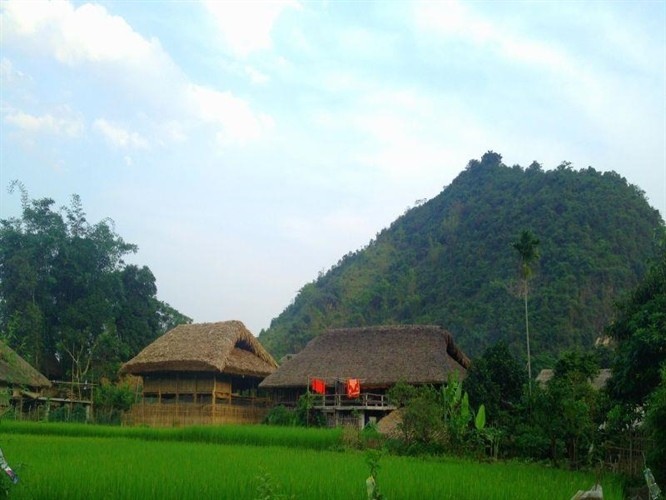(VOVWORLD) - Stilt-houses with thatched roofs have been a familiar sight in the northern mountainous province of Ha Giang. Local authorities are taking various measures to preserve these traditional structures as many have been replaced with modern buildings.
 Traditional stilt-houses in Ha Giang province. (Photo: baodantoc.vn) Traditional stilt-houses in Ha Giang province. (Photo: baodantoc.vn) |
Stilt-houses built in clusters are popular in Ha Giang’s villages. They are made from natural materials such as wood, palm leaves, bamboo, and rattan, and are about 2 meters above the ground, high enough to avoid wild animals. Stilt-houses are built in a closed model which includes kitchen and rooms for living and storing food.
Brick houses have been gradually replacing stilt-houses. At present, stilt-houses are only popular in Tay and Nung ethnic villages.
Lung Cam Tren is the only hamlet in Sung La commune able to preserve traditional houses and is recognized as a community-based tourism cultural village which meets the “One Commune, One Product” standard in terms of tourism.
“Some local households have shifted to constructing modern-style houses in the village. We have persuaded and encouraged them to preserve traditional houses, which are considered a unique cultural value and tourism product,” said La Mi Kha, Chairman of Sung La commune’s People’s Committee.
 A stilt-house of Tay ethnic people in Ha Giang. (Photo: baohagiang.vn) A stilt-house of Tay ethnic people in Ha Giang. (Photo: baohagiang.vn) |
Under Ha Giang’s program to uphold cultural identities, each household is provided with 2,500 USD to built or upgrade their traditional houses. Nguyen Van Chinh, Vice Chairman of Dong Van district, said local authorities have worked with Ha Giang province to preserve traditional houses in the locality.
“It is essential to support local people with materials to build stilt-houses, including tiles and wood. At present, 4 mountainous districts have implemented policies to encourage local people to preserve traditional houses and promote it as unique tourism products to lure more tourists to the area,” said Chinh.